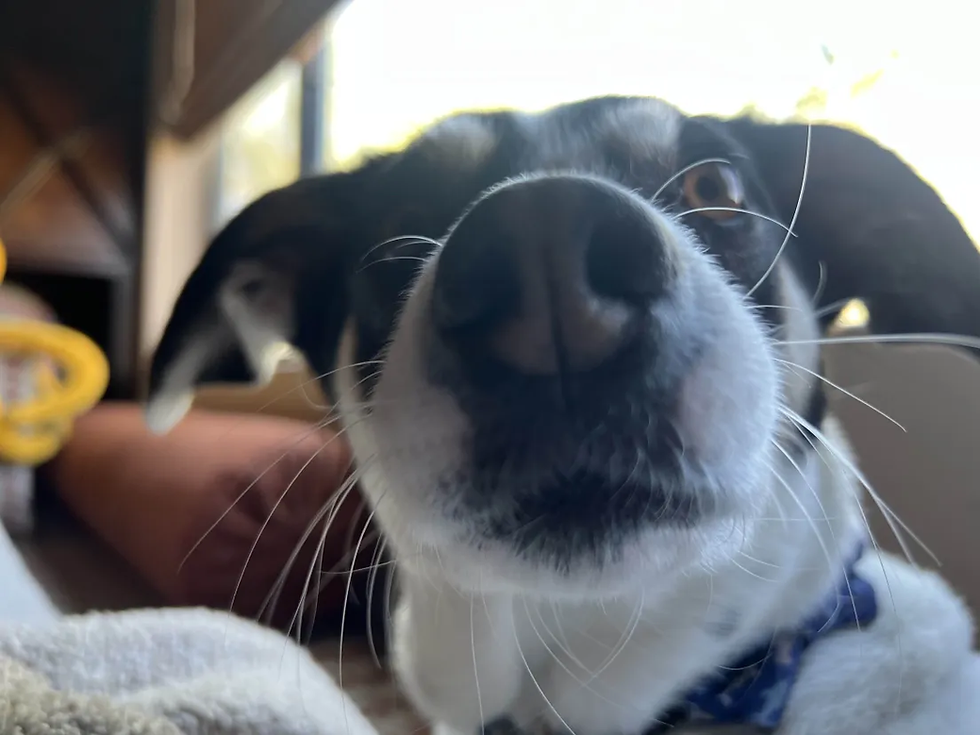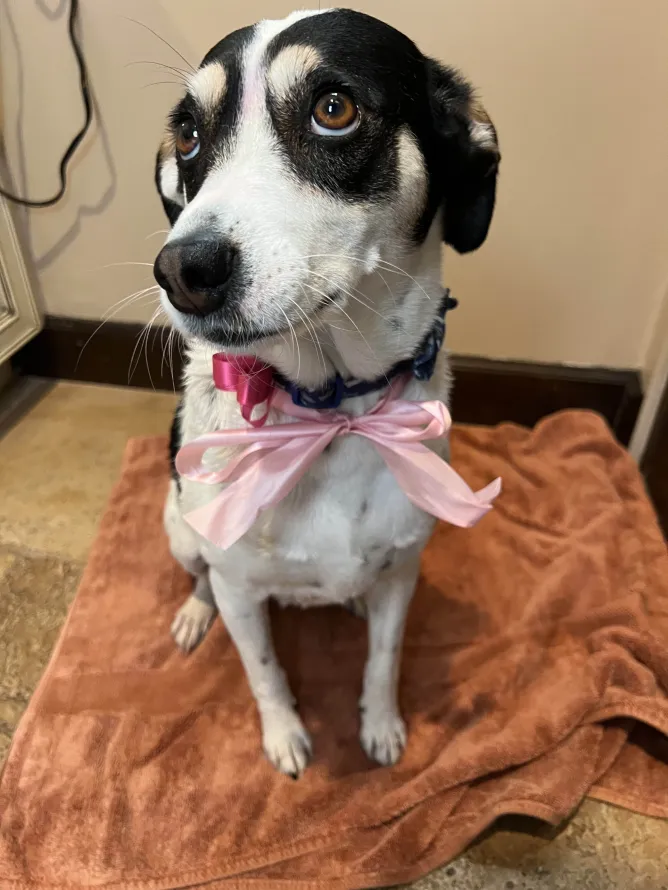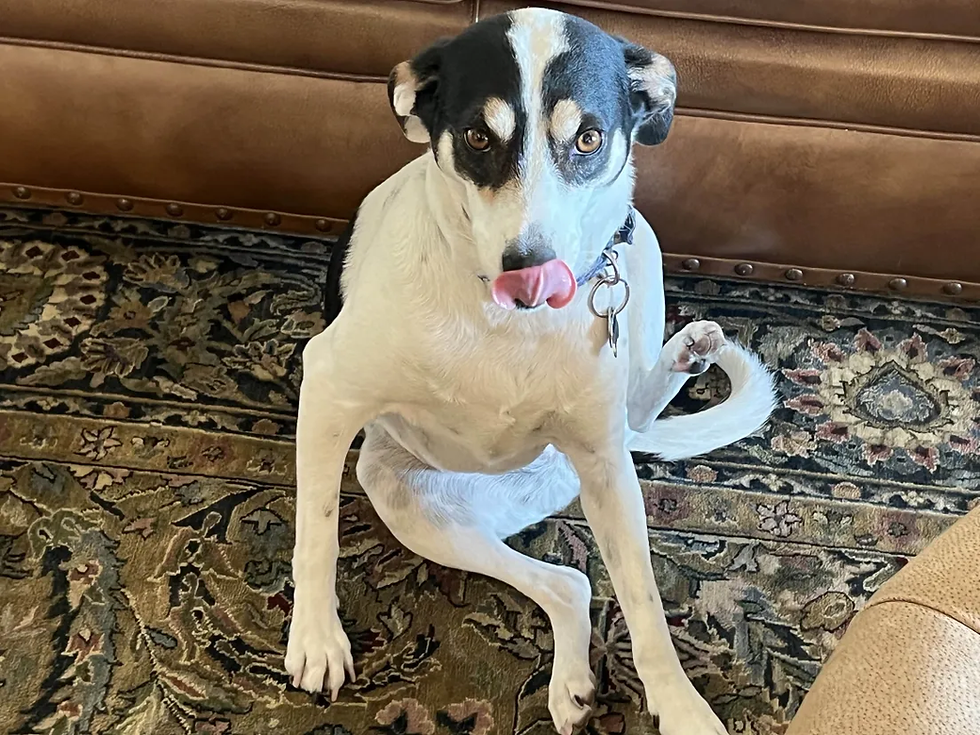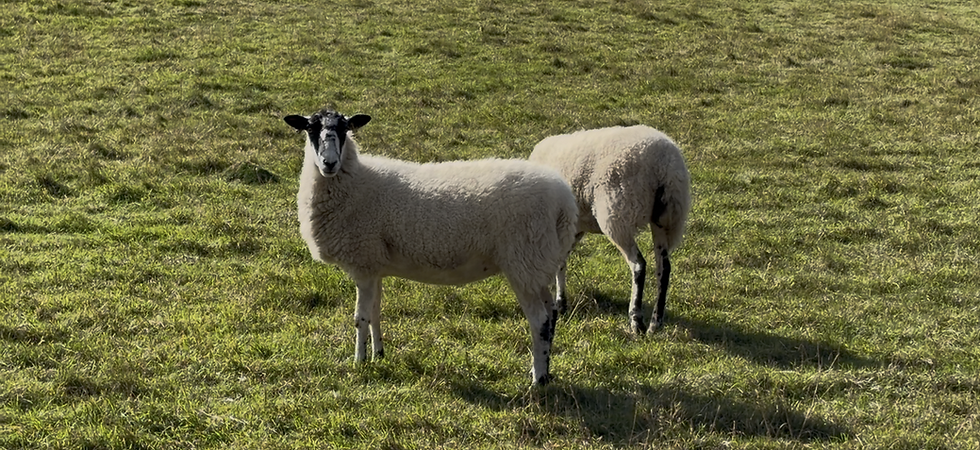DOG HAIR!
- kradiganscience24
- Jul 21
- 3 min read
Tavishi
My mom likes to say that my dog is perfect, except for the fact that she sheds. I, on the other hand, disagree: after all, dog hair is good seasoning in food.

The root of dog hair can be traced back to the embryo. Hairs begin to appear about 3 weeks into gestation, at about 29 days old. At this point, hair is present primarily in the cheeks, eyelids, and mandible, developing into whiskers. Whiskers are just hairs with sinuses, and are more tactile than other hairs. Dog whiskers have dipartite sinuses, or just two sinuses per hair. This is typical with most animals, except pinnipeds, which have tripartite sinuses.

Hair develops in an embryo in four stages.
First, the pregerm phase, which is just a thickening of the epidermis. The pregerm then further progresses, as basal cells push out, and the whole developing structure sinks into the skin, forming a hair germ. The hair germ then thickens, forming a hair peg. Then, the bottom bit of the hair follicle becomes rounded, or bulbous, forming a bulbous peg.
All of this is fully developed by the time the embryo is 40 days old. Now, the hair follicle still isn't fully developed, as it continues to grow in length, and differentiate with respect to the dermal papilla, forming the arrector pilli muscle and the epitrichial glands associated with the hair.

The hair will later on develop from a simple hair to a complex hair after birth.
A simple hair consists only of one outer hair associated with the follicle. A complex hair follicle, however, has multiple types of soft undercoat hairs underneath a primary cover hair. The primary cover hairs are long, bristly, and straight, whereas the soft undercoat hairs are soft, wavy, and woolly. At birth, hair follicles are generally simple hair follicles. Secondary hairs begin to pop up at around 3-4 weeks of age.

There are six types of hair, ranging in the amount of waviness, bristle, and length. According to the diagram below that I stole from Miller and Evan's Anatomy of the Dog, in order from bottom to top, the six types of hair are: straight, bristle, wavy bristle, bristled wavy, large wavy, and fine wavy. Bristled wavy, large wavy, and fine wavy are all the short, wavy, soft undercoat hairs.

Different breeds of dogs have different proportions of each hair type. For example, wirehaired dogs have an extra seventh type of bristle hair. Poodles have little to no medullary canal, accounting for the higher proportion of fine wavy hairs.

Hair also has a life cycle of its own, cycling through a few stages of growth, quiescence, and shedding. Some posit that there are only 3 stages of the life of a hair, but it's best explained with a rotation through 5 stages.
First, anagen, which is the stage of active growth. This is when the follicle is the longest. Anagen is then followed by catagen, which is a transition phase where a thick, glassy membrane surrounds the outside of the follicle, and it becomes less deep in the skin. Telogen is a stage of being really short and in quiescence. Finally, the hair goes into exogen, or the process of shedding, and then cycles back to anagen.

Color in fur is determined by two pigments: eumelanin and pheomelanin. Eumelanin produces black and brown pigments, and pheomelanin produces yellow and red pigments. Of course, these pigments are affected very much by a lot of different genes.
Let's take Taara as an example.

The pigment primarily expressed in her fur is eumelanin, although a lot of her fur has no pigment, or is just plain white. Now, Taara's black spots aren't diluted, so we know the D locus of the melanophilin gene has a dominant phenotype. She also has no brown, so we know that the B locus of the TYRP 1 gene has a dominant phenotype, too. Taara expresses a teensy weensy bit of pheomelanin in her eyebrows, ears, and cheeks. Also, Taara has lots of little silver spots flecked around her body, thanks to the Merle locus on the gene SILV. This is especially prominent in border collies and Australian shepherds, both of which Taara has blood of.

p.s. dog spelled backwards is pinniped




Comments